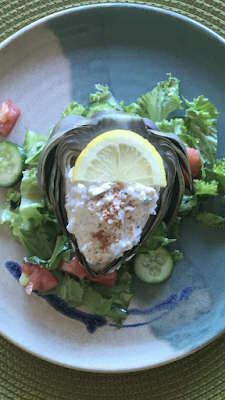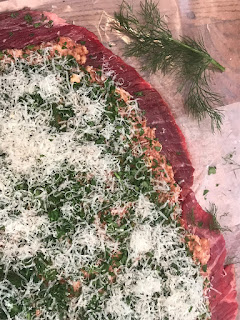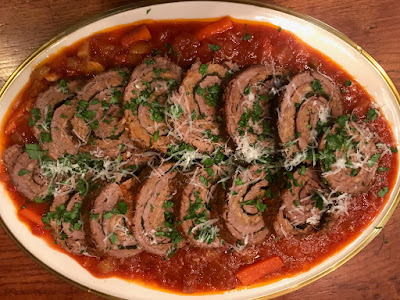The study of BBQ sauce comes with a map, and on that map,
Georgia stands between two kingdoms: Carolina Gold - with a tart mustard base -
on the east; and Memphis style - with a sweet tomato base - on the west. Their inescapable
influence is felt everywhere in between. You could travel a lot through Georgia
and never realize it had its own distinctive style of BBQ sauce. But a generation
or two ago, and many more before, you would have been hard pressed to find
anything else.
The sauce was only used with pork. It was thin and brown. A whiff would wake you up -
shake you up. It was vinegar, dirtied with spice. It could separate on command.
There was sugar in it, but not enough to detect. There was ketchup, but not
enough to redden. It did not cover, it did not drip. It was not to be sopped.
It just vanished in the close chopped meat and was not given a thought. I
don’t remember anybody ever saying anything about sauce. You didn’t say that is good sauce. You said that is good BBQ. If you bought BBQ, you
didn’t get meat in one container and sauce in another. There was no sauce on
the side. It was in the meat. As far as I could tell, for most of my boyhood, the
term BBQ sauce meant something made by
Kraft or Johnny Harris, and it was sold in a bottle at Thriftway. If anybody ever
used it, it was on chicken. It had nothing to do with BBQ pork.
In fact, I remember the first time I ever saw, as opposed to
tasted, Georgia BBQ sauce. It was made by Mr. James Sanders, the venerated
butcher at Thriftway, and it was in a big, clear plastic jar. I could see beneath the
translucent brown liquid the strata of spice on the bottom, and I thought of
the sandy floor of the swimming hole in the Little ‘Hoopie creek.
I am not trying to be poetic. I remember what I thought.
We have since grown cosmopolitan, and now generally avoid
serving the sauce already mixed in the meat. I guess it’s just out of kindness
to the purist who prefers not to smother and kill the taste of the meat itself.
Though there’s nothing wrong with tossing the meat in a little something - a
dollop of the sauce diluted in apple juice, perhaps - just a hint of the
full-blown taste that also keeps things moist. But nowadays we are mindful of
the sauce and the role it plays - and, just as with the meat, there is
something to be said for being able to appreciate the sauce itself, by itself. Just as an important part of
the experience.
So this is not the old-timey Georgia Vinegar Sauce that Ray
Charles or Jimmy Carter grew up with. It is jazzed up a little. Sauced up, you might say. Our influential neighbors,
after all, are close. And I couldn’t resist a touch of Georgia’s signature
peach. But those qualities that set Georgia vinegar sauce apart from the other,
thicker, sweeter sauces, are still there. Not only there, but amplified.
Combine in a sauce pan:
2 C apple cider vinegar.
1 C chili sauce
1/2 C hot sauce
1/2 C brown sugar
3 T peach preserves
2 T black pepper
2 T salt
1 T red pepper flakes
Bring to a high simmer, then bring it to low, and cook for
10 minutes.
And at last you have a use for one of those wonderful empty
whisky bottles you couldn’t bring yourself to throw away.






























